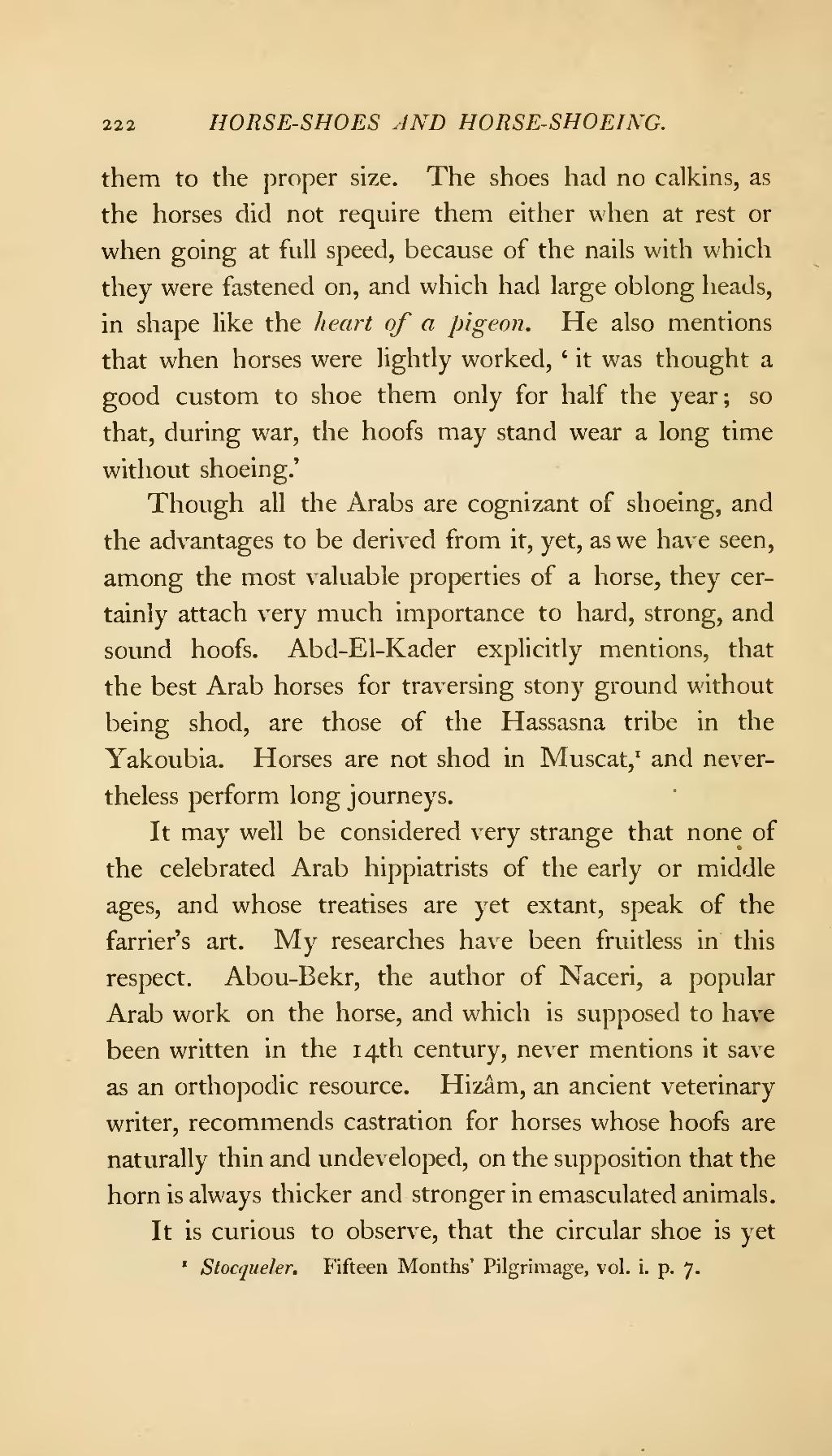them to the proper size. The shoes had no calkins, as the horses did not require them either when at rest or when going at full speed, because of the nails with which they were fastened on, and which had large oblong heads, in shape like the heart of a pigeon. He also mentions that when horses were lightly worked, 'it was thought a good custom to shoe them only for half the year; so that, during war, the hoofs may stand wear a long time without shoeing.'
Though all the Arabs are cognizant of shoeing, and the advantages to be derived from it, yet, as we have seen, among the most valuable properties of a horse, they certainly attach very much importance to hard, strong, and sound hoofs. Abd-El-Kader explicitly mentions, that the best Arab horses for traversing stony ground without being shod, are those of the Hassasna tribe in the Yakoubia. Horses are not shod in Muscat,[1] and nevertheless perform long journeys.
It may well be considered very strange that none of the celebrated Arab hippiatrists of the early or middle ages, and whose treatises are yet extant, speak of the farrier's art. My researches have been fruitless in this respect. Abou-Bekr, the author of Naceri, a popular Arab work on the horse, and which is supposed to have been written in the 14th century, never mentions it save as an orthopodic resource. Hizâm, an ancient veterinary writer, recommends castration for horses whose hoofs are naturally thin and undeveloped, on the supposition that the horn is always thicker and stronger in emasculated animals.
It is curious to observe, that the circular shoe is yet
- ↑ Stocqueler. Fifteen Months' Pilgrimage, vol. i. p. 7.
